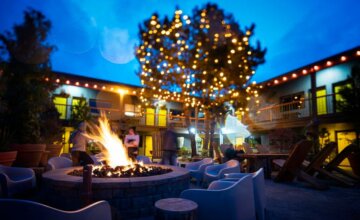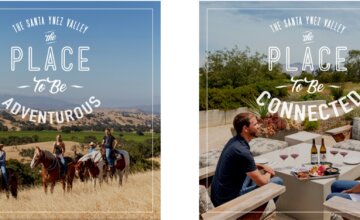DMO Insights – July 7
- Jul 07, 2020
- By Justin Yax
- In DESTINATION, DMO INSIGHTS
In this edition:
- – LATEST RESEARCH FINDINGS FROM DESTINATION ANALYSTS
- – DMOs BEING ASKED TO DO MORE WITH LESS
- – WHY POOR RISK ASSESSMENT IS HUMAN NATURE
- – GROUP TOUR OPERATORS – THE RIPPLE EFFECT
- – RECENT NEWS & USEFUL LINKS
“Comply or go elsewhere.” Those were the first four words of a press release I wrote for a DMO client of ours last week, imploring people to be prepared to visit on the destination’s terms or make other travel plans for the July 4 weekend. How effective that direct message truly was remains to be seen, but the July 4 holiday weekend came and went in that particular DMO and across the country with a simultaneous whimper – and a bang.
The whimper came from canceled or scaled back fireworks shows, parades, BBQs, and other annual traditions – although Joey Chestnut still managed to consume a world record 75 hot dogs in less than 10 minutes at the annual Nathan’s Hot Dog Eating Contest, which was held without spectators and moved from its traditional Coney Island stage to an undisclosed indoor location.
The bang came not from fireworks, but from more stories, images, and video of crowded beaches, packed parties, and other examples of virtually non-existent social distancing, as well as more explosive increases in COVID-19 cases in the U.S., which added another 145,980 positive results over the three-day weekend.
While tightening restrictions including closures of more businesses and mask mandates in many states – the Governor of New Jersey is lobbying hard for a federal mandate – we will hopefully see pockets of progress when it comes to slowing the spread a second time. But in general, we can expect confirmed cases to continue to increase as we look at the data two weeks from now, and as more infected people are infecting more people.
Thanks, as always, for reading, and we hope you continue to find value in this newsletter.
DESTINATION ANALYSTS’ WEEKLY SURVEY FINDINGS
When compared to travel over the Memorial Day Weekend, more than twice as many people took trips for the Fourth of July weekend. And those who traveled skewed younger and male, and were more likely to be urban city dwellers with higher household incomes. In this week’s findings from Destination Analysts, we learn a little more about who is traveling at the moment, what types of destinations they are visiting or planning to visit, and what their fears and concerns are about traveling to certain communities right now.
Optimism gap (still) growing: Exactly one month ago, the gap between the number of American travelers who believe the COVID-19 situation in the U.S. will get “better” or “much better” over the next month, and the number of those who think it will get “worse” or “much worse,” was in the single digits. Today, that gap stands at 48.5 points, up another 2.9 points from last week as almost 63 percent of American travelers now believe the situation will get “worse” or “much worse” over the next month.
Memorial Day Weekend x2: Despite this significant increase in the optimism gap since late May, more than twice as many Americans (16.5%) took a trip over the July 4 holiday compared to Memorial Day Weekend (5.9%). The answer to why may be found in the “Why poor risk assessment is human nature” story that follows below.
Young affluent males escaping the city: No big surprise here, as the demographic widely considered to contain the majority of “early adopters” was at the forefront of July 4 holiday travel. This segment was predominantly male, more likely to be millennials, largely urban dwellers, and affluent. Side note: while the current urban environment has spurred people to travel outside their home city, this will likely be a long-term trend that results in permanent relocation for many of these individuals and even families who seek the attractive qualities of quieter, safer, slower, and more rural communities.
Situational avoidance: The number of Americans who said they will avoid certain destinations they might otherwise consider increased 7.7 percent over last week. This is due largely to factors such as increasing case numbers, the community’s pandemic response, the behavior of other visitors as well as locals, and unfavorable media coverage of the destination.
DMOs ASKED TO DO MORE WITH LESS
With budget shortfalls and reduced funding becoming the rule rather than the exception among DMOs for at least the next 12-24 months, and with many destinations starting up their new fiscal budget cycles as of July 1, we are all charged with the difficult task of finding ways to do more with less at a time when tourism marketing and promotion is needed most. As one of the hardest hit industries, not to mention one of the most critical to the success and prosperity of small businesses that rely on tourism (as we discussed in a previous newsletter article about the ‘Interdependence Economy’ which you can revisit HERE), leisure travel has taken an unfair share of the blows from COVID-19.
Now is not the time for DMOs – or the public agencies that govern them – to abandon marketing or make hasty decisions with regard to funding, as we previously stated almost three months ago:
“The roles, responsibilities, and pressures on DMOs have never been greater than they are right now. Summer travel is right around the corner. Uncertainty abounds with regard to travel restrictions nationwide. DMO budgets are being closely scrutinized and re-forecasted across the board as revenues fall far short of projections. But if history is any indication of COVID-19 recovery for destinations, those DMOs who continue to make investments in marketing, even if the purpose of those dollars shifts from media spend to strategic planning, will benefit most in the months and even years that follow. Having a sound recovery strategy that starts now with pre-recovery planning and continues well into the foreseeable future is critical to the path to recovery for all destinations regardless of size, location, budget, or audience.”
As predicted back in mid-April, we are seeing this scenario play itself out among our clients and at other destinations throughout the West and across the country. But as is the case with most challenges, there are some silver linings to be found that can help position destinations for success. So just how does this happen, and what should destinations be doing differently to market themselves at a time when there is no definitive end in sight short of a COVID-19 vaccine?
In this case, a reassessment and reprioritization of everything from funding mechanisms and staffing, to goals, measurement, and individual tactics is needed. While there are many different solutions, and every destination is unique in its challenges, here are a few simple things that can be done now:
Trim the fat: Look for areas of overspending or “luxury” marketing, including financial and/or human resource intensive efforts such as long format video, event or venue sponsorships, original programming, etc. Even the elimination of a printed visitor guide – which holds less value particularly right now at a time when the shelf-life of content is so short and changes so rapidly – may be an opportunity to trim tens of thousands of dollars from a budget.
Narrow focus: A marketing plan that may have previously included numerous marketing channels like print, digital, social, search, out-of-home, and more, needs to be pared down to the tactics that have the greatest likelihood for increasing awareness, perception, and hopefully conversion.
Reassess KPIs: Traditionally, KPIs have been centered around metrics that can be easily measured and monetized, such as goal conversions (i.e. clicks to book), occupancy rates, and room tax collections. With the visitation bar reset in the current climate, and likely to remain low for some time, it isn’t possible to evaluate MoM and YoY numbers and derive any sort of realistic (or accurate) success or failure measurement.
Research: If you don’t already have current qualitative or quantitative data available for your destination, or are operating off of hunches, assumptions, and a “this is what we’ve always done” mentality, now might be the time to invest in some formal research. While the upfront costs can be substantial, the efficiencies and savings that are created on the back end – not to mention the insights gained from the data and cross tabs – can more than pay for themselves in short order by the clarity they bring to the overall marketing effort. And you might even be surprised by what you learn.
Public Relations: From an ROI standpoint alone, earned media generated through public relations and influencer outreach can pay for itself many times over. Consider that a single editorial feature in a magazine such as Sunset can carry a value of more than $3.5 million, and it’s easy to see why many destinations are placing a greater priority on PR. Not to mention that right now, travelers are increasingly looking for information and suggestions from independent and trusted sources such as print, broadcast, and digital media outlets, as well as influencers.
Consider outside help: The thought of spending money to hire an outside consultant such as an ad agency or public relations firm – or both – might seem counterintuitive at a time when cost savings are a priority. But the experience, insights, and objective perspective they bring to the table can be invaluable. Again, another example where at a time when DMOs may be taking on more responsibilities than usual, finding ways to outsource some of the work to the right marketing partners can pay dividends in both the short- and long-term. And make you look good in the process.

WHY POOR RISK ASSESSMENT IS HUMAN NATURE
On Memorial Day, there were 1,720,152 confirmed cases in the U.S. Two weeks later, on June 8, that number had grown to 2,028,208, an increase of 18 percent. As of yesterday, there were 2,982,928 confirmed cases in the country, a 73 percent increase over Memorial Day and a 47 percent increase over June 8.
In a June 30 article titled “Why You’re Probably Not So Great at Risk Assessment,” the New York Times focused on five key factors that contribute to our ability (or inability) to process risk: optimistic bias, exposure therapy, confirmation bias, false sense of control, and unclear cultural cues.
The basic principle that “I don’t think my risk is as great as your risk” is known as optimistic bias. It’s why I have no qualms with sending a quick text message while driving, yet I look down upon others when I see them doing the same thing in the lane next to me. And while it thrives in communities throughout the world, it is most prevalent in highly individualistic countries and cultures such as the United States.
Most commonly used to help people overcome major fears or anxieties in their lives, exposure therapy works off the principle that the more you are exposed to your fears, the more desensitized you become to them. The mere act of living through the current pandemic is, in itself, a sort of exposure therapy as we all become less nervous and fearful through prolonged exposure to the situation.
At its core, confirmation bias is the behavior whereby we seek out the answers we want to hear to the questions we have, as opposed to hearing both sides of the explanation or answer. With regard to face coverings, this could mean searching for “do face coverings protect me from getting coronavirus?” as opposed to asking the more appropriate question of “do face coverings make everyone safer from the spread of coronavirus.” With confirmation bias, we know the answer we want to hear so we ask a loaded question, as opposed to rephrasing the question so the answer is actually what we need to hear.
The more control people have, the safer they feel, and this false sense of control is a strong contributing factor to the spread of COVID-19. The article points out that people who have an irrational fear of flying are more likely to drive somewhere if it means avoiding an airplane, even though 36,560 Americans died in car crashes in 2018 as opposed to 381 in aviation accidents. Mask wearing is a great example of a false sense of control, as simply donning a mask does not keep you from coming into contact with the virus and must be combined with other measures such as frequent hand washing and sanitizing, as well as continued social distancing.
Our President is most often seen not wearing a face covering. Public officials and even leading health experts are inconsistent with their recommendations and guidance. And we don’t have any history to learn from with regard to dealing with a pandemic of this magnitude. These unclear cultural cues make it difficult for us to follow the lead and direction of others in the present or from a historical perspective, and we are often left drawing our own conclusions or formulating our own opinions and beliefs from the broad spectrum of information that is available to us.
While the increase in new cases we are seeing (it should be noted that while total case numbers are increasing, the number of deaths is decreasing) can be attributed to many things, most of them point back to our relative inability as human beings to properly and logically assess and respond to risk. Whether we see large gatherings of people without proper social distancing, a single shopper in a store not wearing a face covering, diners without face coverings or proper physical distancing, or all of the above, most of those behaviors can be traced back to one or more of the five factors mentioned above. Maybe this is partly in defiance, partly due to entitlement, or the result of a lack of information, but it is likely due in large part to our poor ability as humans and as a society of individuals to properly evaluate and assess risk.
THE RIPPLE EFFECT OF GROUP TOUR OPERATORS

Their presence is unmistakable. Large, luxurious motor coaches with heavily tinted windows roll into town during the morning, offload guests, and park around the corner while their passengers spend time and money at shops, restaurants, and other local businesses.
Whether they are taking travelers on a pre- or post- cruise shore excursion, transporting groups to and through National Parks, or running ‘leaf peeping’ tours in the northeast and other popular fall foliage destinations, Group Tour Operators are a critical link in the travel and tourism food chain. And unfortunately for them, much like the cruise industry itself, almost nobody wants to travel in a confined motorcoach for hours or days with upwards of 50 strangers right now. And financial incentives, enhanced safety measures including lower capacity, and even no questions asked cancellation policies don’t seem to be moving the needle for the remainder of 2020 and into 2021.
Just as their presence is unmistakable, so too is their absence. According to the American Bus Association, which collects data on bus tours, more than 6 million people go on such trips every year in the United States, spending an estimated 80 million nights in hotels and creating 2 million jobs.
As a result, traditional group tours will likely be replaced, at least in the short-term, by one or both of the following formats.
Private tours: In our April 27 Weekly DMO COVID-19 Update newsletter we identified Private Travel as one of four key trends to watch (the others being slow travel, wellness, and staycations) during the COVID-19 pandemic and beyond. Now is the time for DMOs to cozy up to private travel operators to cross promote the convenience of accommodating and catering to the needs of small groups, and the relative safety that comes with touring privately. While the private travel trend applies to everything from private jets and private islands, to private cabanas and private dining, private tours and itineraries in support of them should not be overlooked as a means to attract small groups who are looking to avoid crowds and minimize risk of exposure.
‘Individual’ group tours: While it may sound like an oxymoron, the number of people who have had group tour excursions cancelled, rescheduled, or otherwise displaced by COVID-19 is in the millions. For these people and many others like them, the options are limited: reschedule for next year or beyond, or take to the road in the privacy, comfort, and safety of their own vehicle and take an “individual group tour” in lieu of a traditional group tour. With demand for road trips (and RV travel, as discussed HERE) surging, destinations would be well advised to repurpose or even develop group tour itineraries and activities that can be adapted for individual travelers, including downloadable guides, route maps, highlights, and suggested itineraries.
Until such time as the group tour industry recovers, and travelers feel safe and comfortable with the notion of traveling en masse with people outside of their own circles, group tours as we knew them are likely to remain on indefinite hold with very few exceptions. And not only will the businesses and individuals who rely on their existence for a paycheck take a hit, so too will the communities they visit. Being prepared for their absence, and nimble in finding alternative solutions, will help soften the blow to destinations who rely heavily on group tours and travel.
RECENT NEWS & USEFUL LINKS
Recent News
AAA says coronavirus will dent summer travel, but not road trips – USA Today
Refusing to wear a mask is like driving drunk – NY Times – July 1
Summer travel: Out with planes, in with rural getaways – NBC News – July 5
Tourism marketers map out reopening campaigns – The Drum – July 1
Gen Z and Millennials are key to travel industry’s recovery – Travel Pulse – July 4
How the pandemic affects the future of Gen Z travel – USA Today – July 6
Useful Links
Key Survey Findings – Week of July 6 – Destination Analysts
How DMO social media drives travel decisions – Destination Analysts
AirDNA Covid-19 Data Center – AirDNA – ongoing
Guidance for promoting the health & safety of all travelers – U.S. Travel




